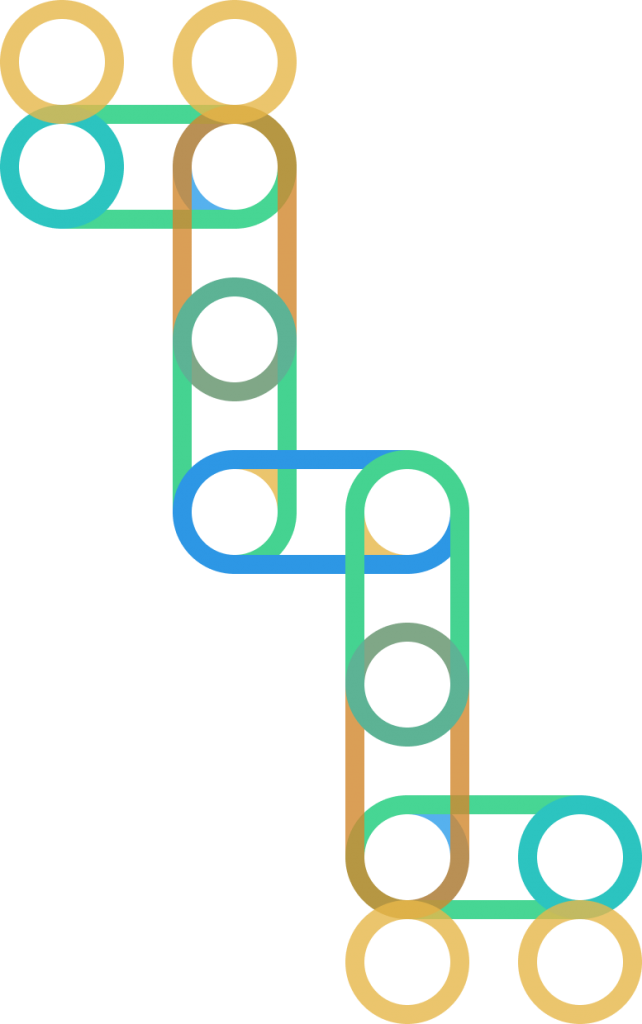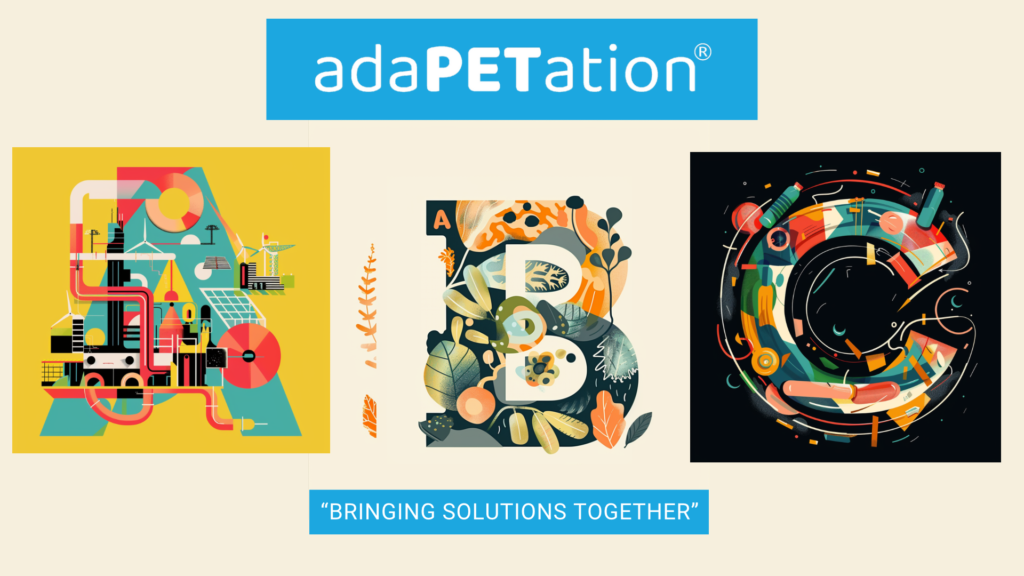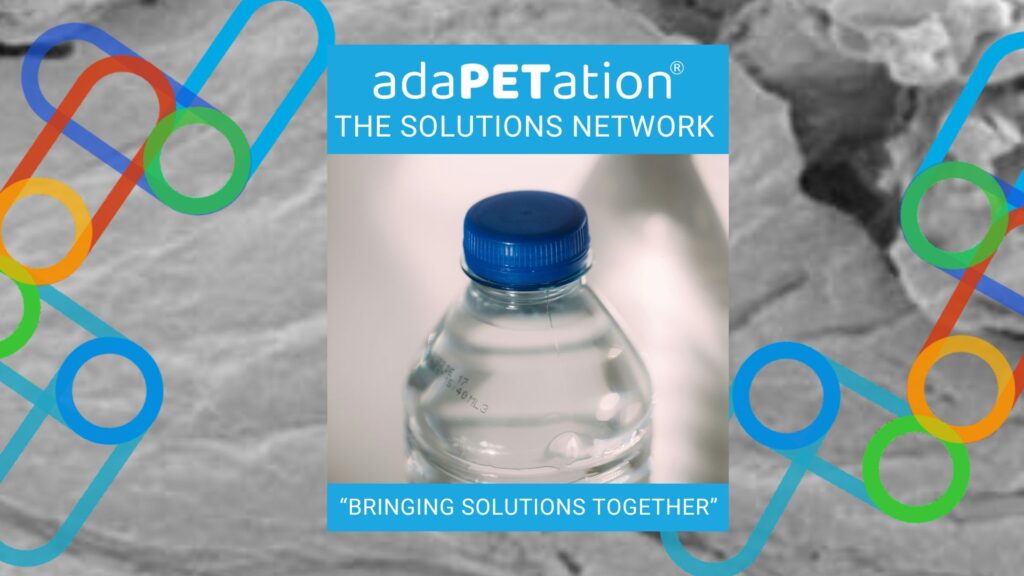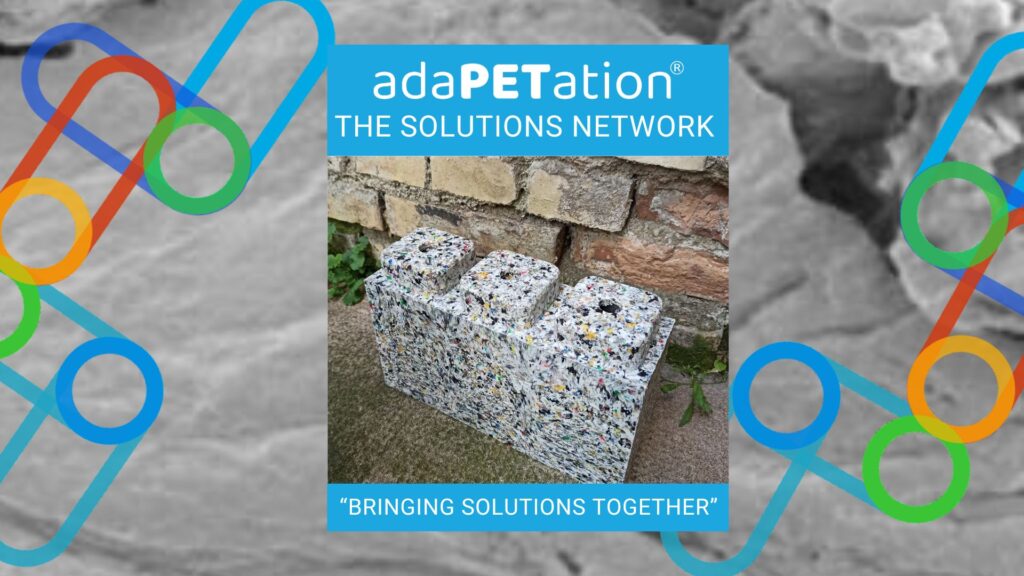
Explore the key concepts transforming the PET polymers industry towards a regenerative path. This comprehensive A-Z guide highlights the critical words and ideas driving sustainable innovation, emphasizing the importance of PET plastic in creating a circular, eco-friendly future. Discover how each element contributes to a greener, more sustainable world.

A is for Awareness
Awareness is the cornerstone of any movement towards sustainability. In the context of PET plastics, raising awareness about the benefits and potential of recycling PET is crucial. Educating the public and industries about the lifecycle of PET, its recyclability, and the environmental benefits of reusing PET can drive significant change. Awareness campaigns can highlight how PET recycling reduces landfill waste, lowers carbon emissions, and conserves natural resources. By fostering a culture of awareness, we can encourage more responsible consumption and recycling behaviors, paving the way for a more sustainable future.
B is for Biomimicry
Biomimicry involves drawing inspiration from nature’s time-tested patterns and strategies to solve human problems. For the PET plastic industry, this means designing materials and processes that mimic the efficient, waste-free systems found in nature. By studying how natural organisms produce, break down, and reuse materials, the industry can develop innovative solutions to enhance the sustainability and regenerative capacity of PET plastics.
One example is the development of PET plastics that can break down more easily in natural environments, inspired by the way certain fungi and bacteria decompose organic matter. Research into enzymes that degrade PET plastic, such as those found in some bacteria, can lead to new methods of recycling and waste management that are both effective and environmentally friendly.
Another aspect of biomimicry is the design of PET products with lifecycle thinking in mind. By mimicking the cradle-to-cradle cycles of natural systems, PET products can be designed for disassembly and recycling, ensuring that every component can be repurposed or returned to the environment without harm. This approach not only reduces waste but also promotes a circular economy where materials are continually reused.
Incorporating biomimicry into the PET plastic industry can lead to more sustainable production processes, innovative recycling methods, and products that harmonise with the natural world. By looking to nature for guidance, the PET industry can make significant strides towards a regenerative and sustainable future.
C is for Circular Economy
The concept of a circular economy is central to transforming the PET industry. Unlike the traditional linear economy, which follows a ‘take, make, dispose’ model, a circular economy emphasises keeping resources in use for as long as possible, extracting maximum value before recovering and regenerating products and materials at the end of their life cycle. For PET plastics, this means designing products with recyclability in mind, improving recycling technologies, and creating systems for efficient collection and processing of PET waste. By adopting a circular economy model, the PET industry can minimise waste, reduce the need for virgin materials, and create a more sustainable, regenerative system.
D is for Design for Recycling
Design for recycling involves creating PET products that are easier to recycle. This includes choosing compatible materials, avoiding additives that hinder recycling, and designing products that can be easily disassembled. By prioritising recyclability in the design phase, manufacturers can ensure that PET products are more likely to be recycled efficiently, reducing contamination and improving the quality of recycled PET. Design for recycling is a proactive approach that can significantly enhance the sustainability of PET products and support the goals of a circular economy.
E is for Education
Education is a powerful tool in promoting the sustainable use and recycling of PET plastics. Educational programs targeting schools, communities, and industries can provide the knowledge and skills needed to understand the importance of PET recycling and how to do it effectively. Education can demystify the recycling process, highlight the environmental benefits, and encourage innovation in recycling technologies and practices. By fostering a well-informed society, we can drive more effective recycling initiatives and support the transition to a more sustainable PET industry.
F is for Food Safety
Food safety is a critical aspect of using PET plastics, particularly in packaging. PET is widely used for food and beverage containers because it is strong, lightweight, and resistant to microorganisms. Ensuring that PET products meet food safety standards is essential to protect consumers’ health and maintain trust in PET packaging. Innovations in PET production and recycling must prioritize maintaining these safety standards, ensuring that recycled PET (rPET) is free from contaminants and safe for reuse in food packaging. By upholding strict food safety protocols, the PET industry can continue to provide safe, sustainable packaging solutions.
G is for Green chemistry
Green chemistry focuses on designing chemical products and processes that reduce or eliminate the use and generation of hazardous substances. In the context of PET plastics, applying green chemistry principles can lead to more sustainable production methods and safer recycling processes. This includes using non-toxic catalysts, minimising waste, and improving energy efficiency in PET manufacturing and recycling. By adopting green chemistry, the PET industry can reduce its environmental impact and contribute to a healthier, more sustainable world.
H is for High-quality recycled PET (rPET)
High-quality recycled PET (rPET) is essential for creating a robust market for recycled plastics. Ensuring that rPET meets high standards of purity and performance makes it a viable alternative to virgin PET in various applications, including packaging, textiles, and automotive parts. Developing technologies and processes that produce high-quality rPET can enhance its marketability and drive demand for recycled materials. By focusing on quality, the PET industry can encourage the use of rPET, reduce reliance on virgin resources, and support a circular economy.
I is for Innovation
Innovation is the driving force behind the transformation of the PET industry towards sustainability. This includes advancements in recycling technologies, the development of new materials, and innovative business models that promote circular economy principles. Encouraging research and development in the PET sector can lead to breakthroughs that improve recycling efficiency, reduce environmental impact, and create new opportunities for recycled PET. By fostering a culture of innovation, the PET industry can stay ahead of challenges and continuously improve its sustainability practices.
J is for Job creation
The recycling and sustainable management of PET plastics can create significant job opportunities. From waste collection and sorting to processing and manufacturing, the PET recycling industry can generate employment across various skill levels. Social enterprises, like those led by Cordie Aziz-Nash, Chioma Ukonu, and Siddharth Hande, demonstrate how integrating waste collectors and other informal workers into the recycling value chain can provide stable livelihoods and improve economic conditions in local communities. By highlighting the job creation potential, the PET industry can garner support for sustainable practices and contribute to social and economic development.
K is for Knowledge sharing
Knowledge sharing is crucial for the global advancement of sustainable PET practices. By exchanging information, best practices, and technological innovations, stakeholders in the PET value chain can collaborate more effectively to overcome challenges and implement sustainable solutions. Platforms for knowledge sharing, such as conferences, workshops, and online communities, can facilitate the dissemination of valuable insights and foster partnerships. Encouraging knowledge sharing can accelerate progress towards a more sustainable PET industry and promote collective action on a global scale.
L is for Life cycle Assessment (LCA)
Life cycle assessment (LCA) is a comprehensive method for evaluating the environmental impacts of a product throughout its entire life cycle, from raw material extraction to disposal. For PET plastics, conducting LCAs can identify areas for improvement in production, usage, and recycling processes. By understanding the full environmental footprint of PET products, companies can make informed decisions to minimise negative impacts and enhance sustainability. LCA is a valuable tool for guiding the development of more sustainable PET products and practices.
M is for Material Recovery Facilities (MRFs)
Material Recovery Facilities (MRFs) play a vital role in the recycling process by sorting and processing recyclable materials, including PET plastics. Efficient MRFs can improve the quality and quantity of recyclable PET, making it more viable for use in new products. Investing in advanced technologies and optimising operations at MRFs can enhance the efficiency of PET recycling and support the circular economy. MRFs are essential infrastructure for managing PET waste sustainably and ensuring that valuable materials are recovered and reused.
N is for Non-toxic additives
Non-toxic additives are crucial for improving the safety and recyclability of PET plastics. Traditional additives used in plastics can sometimes pose health risks or hinder the recycling process. By developing and using non-toxic alternatives, the PET industry can create safer, more recyclable products. This not only benefits consumer health but also enhances the environmental sustainability of PET plastics. Emphasising the use of non-toxic additives is an important step towards making the PET industry more sustainable and responsible.
O is for Ocean Clean-up
Ocean clean-up efforts are essential for addressing the significant amount of plastic waste, including PET, that ends up in marine environments. Initiatives aimed at removing plastic from oceans and waterways can mitigate the environmental and ecological damage caused by plastic pollution. Supporting ocean clean-up projects and developing technologies to prevent plastic from reaching the oceans are critical components of a comprehensive strategy to manage PET waste. By contributing to ocean clean-up, the PET industry can play a role in protecting marine ecosystems and promoting a healthier planet.
P is for Public policy
Public policy plays a crucial role in shaping the PET industry’s sustainability practices. Regulations and incentives can encourage recycling, reduce plastic waste, and promote the use of recycled materials. Effective public policies can drive industry-wide changes and ensure that environmental standards are met. Advocating for supportive policies and collaborating with policymakers can help create a regulatory environment that fosters sustainable practices in the PET industry. By engaging in public policy, the PET industry can influence positive change and support a circular economy.
Q is for Quality Control
Quality control is essential for ensuring that recycled PET (rPET) meets the standards required for various applications. Maintaining high quality in rPET can increase its acceptance and usage in the market, reducing reliance on virgin PET. Implementing rigorous quality control measures throughout the recycling process can minimise contamination and enhance the performance of rPET products. By prioritising quality control, the PET industry can build trust in recycled materials and support the transition to a more sustainable economy.
R is for Recycling infrastructure
Recycling infrastructure is the backbone of effective PET waste management. Developing and maintaining robust infrastructure for collecting, sorting, and processing PET plastics is crucial for maximising recycling rates and minimising environmental impact. Investments in recycling facilities, transportation, and technology can enhance the efficiency and capacity of PET recycling systems. Strengthening recycling infrastructure is a key step towards achieving a circular economy for PET and ensuring that plastic waste is managed sustainably.
S is for Social Impact
The social impact of PET recycling extends beyond environmental benefits to include economic and social improvements. Integrating informal waste collectors into the formal recycling system can provide stable employment and improve livelihoods. Initiatives like those led by social entrepreneurs Cordie Aziz-Nash, Chioma Ukonu, and Siddharth Hande demonstrate the potential for PET recycling to drive positive social change. By focusing on social impact, the PET industry can support community development and create a more inclusive and equitable economy.
T is for Technology
Technology is a driving force behind the advancements in PET recycling and sustainability. Innovations in recycling technologies can improve the efficiency and quality of recycled PET, making it more competitive with virgin materials. Developments in sorting, cleaning, and processing technologies can enhance the capabilities of recycling facilities and expand the range of recyclable PET products. Embracing technology is essential for the PET industry to stay at the forefront of sustainability and continuously improve its practices.
U is for Upcycling
Upcycling involves transforming PET waste into products of higher value or quality. This creative approach to recycling can extend the lifecycle of PET materials and reduce the need for virgin resources. Upcycling PET can result in innovative products with added functionality and aesthetic appeal, contributing to a more sustainable and circular economy. By promoting upcycling, the PET industry can encourage the development of new products that make better use of existing materials and reduce environmental impact.
V is for Value chain
The PET value chain encompasses all stages of production, use, and disposal of PET products. Understanding and optimising the value chain is crucial for improving the sustainability of PET plastics. This involves enhancing recycling processes, reducing waste, and promoting the use of recycled materials throughout the value chain. By taking a holistic approach to the PET value chain, companies can identify opportunities for reducing environmental impact and increasing resource efficiency. Strengthening the value chain is key to achieving a sustainable future for PET plastics.
W is for Waste reduction
Waste reduction is a fundamental goal of sustainable PET management. Reducing the amount of PET waste generated can alleviate the pressure on recycling systems and decrease environmental pollution. Strategies for waste reduction include designing products for longer life, improving recycling rates, and encouraging responsible consumption. By focusing on waste reduction, the PET industry can minimise its environmental footprint and support the transition to a circular economy. Reducing waste is an essential component of a comprehensive sustainability strategy.
X is for Xenobiotic degradation
Xenobiotic degradation refers to the breakdown of synthetic compounds, such as plastics, by biological processes. Research into microbial and enzymatic degradation of PET can lead to innovative solutions for managing plastic waste. Advances in xenobiotic degradation can enhance the efficiency of recycling processes and reduce the environmental impact of PET waste. By exploring and developing these biological methods, the PET industry can find new ways to address the challenges of plastic pollution and improve sustainability.
Y is for Yield improvement
Yield improvement in PET recycling refers to increasing the efficiency and output of the recycling process. Enhancing yield can result in more recycled PET being produced from a given amount of waste, reducing the need for virgin materials. Techniques for yield improvement include optimising sorting and cleaning processes, reducing contamination, and improving processing technologies. By focusing on yield improvement, the PET industry can maximise the benefits of recycling and support the circular economy.
Z is for Zero waste
Zero waste is an aspirational goal that aims to eliminate all waste by ensuring that all products and materials are reused, recycled, or composted. Achieving zero waste for PET plastics involves creating systems that support complete recycling
LOOKING FOR MORE INSPIRATION?
Systems thinking can help us see PET plastics differently, not as an insurmountable problem but as a challenge we can collectively address. If you’re looking for more examples of inspirational solutions around the world dive deeper into the adaPETation® Solutions Network and let’s reshape our world for the better.
Share it
THE HISTORY OF PLASTIC
Throughout the history of plastic, PET has been crucial in keeping food fresh with lightweight and durable packaging solutions that have helped reduce food waste for almost a century. Learn all about the invention of plastic and the important role it has played feeding people and saving the lives of humans and elephants in the adaPETation® timeline of the history of plastic.





